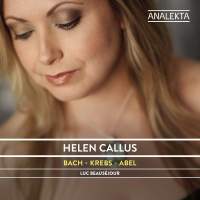Texte paru dans: / Appeared in: |
|
|
Outil de traduction ~ (Très approximatif) |
|
|
Reviewer: Bertil
van Boer The music here contains mostly adaptations and transcriptions, first of the three well-known sonatas for viola da gamba by Johann Sebastian Bach, and then an E-Minor Sonata by Carl Friedrich Abel, one of the best-known gambists of the Classical period. A resident in London, and a roommate of Johann Christian Bach, Abel was one of the last virtuosos on the gamba before its demise as a solo instrument as the century drew to a close. The final work is the slow movement of a trio by Johann Sebastian’s pupil Johann Ludwig Krebs, originally for a pair of violins and continuo. Although Bach himself was a violist, he wrote few works for the braccio (the modern instrument), making violists today either redo the Sixth Brandenburg or adapt the gamba or cello works for the instrument. As for Abel, the same applies, and of course the Krebs Trio has nothing at all to do with the viola. Therefore, this is a disc more about Helen Callus than about the repertory she has chosen. Despite the fact that none of these works are for her instrument, her performance nonetheless is strikingly convincing. She has a dark and rich tone, even in the higher registers (as one finds in the flowing ascent in the Krebs Trio), and when the passage calls for something rather quick and lively, such as in the second movement of the D-Major Bach Sonata, this works to give the arrangement depth and sonority. I am particularly struck by the lyrical and solemn unfolding of the Krebs movement, which Callus adapted herself. It works almost as if originally written for the viola with its wide range and stately progress. There is something urgent about her swift bowing and ease of the florid line of the Abel Sonata’s first allegro, and in the more modern third Bach Sonata in G Minor, this is enhanced by the facility with which she negotiates the meandering line. Luc Beauséjour’s harpsichord playing is as an equal partner, though its softer presence insures that the round tone of the viola stands out. One may not find this in any way a period performance, and for that reason purists might have second thoughts about the adaptations, but Callus’s facile playing, even of adapted works and in the modern full tone style, is sure to win over listeners. | |
|
|
|
|
Cliquez l'un ou l'autre
bouton pour découvrir bien d'autres critiques de CD |
|




